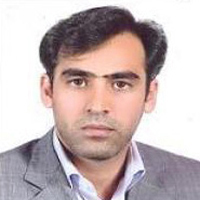analysis of spatial equity in touristic villages (Case study: East Azerbaijan province)
Paying attention to the approach of spatial equity in distribiution of land use in any community, and the way in wich the citizens take advantage from it, represents the social, economic and environmental development. The necessity of paying attention to spatial equity in distribiution of land use in touristic villages in comparison with Nontouristic areas is of great importance, because these areas have a great potential for comprehensive development and especially the development of rural areas. This factor has doubled the necessity of paying attention to spatial equity in these villages. Actually, the use of land and space as a public resource and public wealth is crucial in tourist villages which should be based on scientific principles of land use planning. East Azarbaijan provience due to climatic and cultural diversity and also because of it's historical background is compromised of a numerous touristic villages. Despite all these features, due to mismanagement and lack of optimal allocation of resources and services, they are exposed to a numerous problems such as lack of service centers, lack of green spaces and lack of compatibility of land use with the wishes and needs of tourists. Considering the importance and sensitivity of spatial equity in touristic villages, this research seeks to answer the following basic questions:- To what extent the spatial equity is considered in spatial distribiution of land use in touristic villages of East Azerbaijan province?- How is the correlation between geographic conditions and spatial equity in touristic villages of East Azerbaijan province?- How is the prioritization of touristic villages of the province in terms of spatial equity?- What are the suggested guidelines for the optimal distribiution of land use and achieving spatial equity?
This is a descriptive-analytic research. Data collection was done in documental and survey methods. Review and selection of reseach variables, theoretical framework and research backgrounds is done using documental method. 42 variables of residentail, cultural-religious, communicational, educational, hygience, physical, structural-institutional and service dimensions are investigated in this research. In surveys, the data related to land use of touristic villages of the province was collected and extracted via in person visits of the Islamic Revolution Housing Foundation and the Cultural Heritage Organization of the provience and the city, as well as Iran's statistics center. Also in order to determine the weight of functions, the Delphi technique is used. Then the list of functions was given to 30 of urban planners (including academics and experts of Housing Foundation and the Cultural Heritage Organization) and after analyzing the comments, the weight of functions were extracted. The study population of this research is 48 touristic villages of East Azerbaijan provience, which are tourism target villages and best touristic villages according to the rules and regulations of the Islamic Revolution Housing Foundation and Cultural Heritage organization. To perform analysis, after calculating the gap between current and ideal situation, Vikor model was used. As well as to evaluate the difference between different functions, the one way ANOVA analysis test and Duncan's post hoc test are used and cluster analysis test is used for grading and finally the multivariate regression test is used to explain the changes of this index.
According to the results of Vikor model, the biggest gap with the amount of 0.829 is for 8 of variables related to the touristic services functions. Also residential indexies with the amount of 0.162 are in the best situation in regard of spacial justice.The highest amount of frequency is about the suitable situation with the amount of 45.5%. Also the results of statistical tests shows that there is a correlation between population, beneficary index, fullfilment of guide plans and the typology of village with the amount of spacial justice in touristic villages.The results of Vikor test showed that the lowest gap of spatial equity is related to the villages of Ina Lu (0.150), Savar (0.276) and Darband (0.293) in residential and street network functions. In addition, the largest gap is related to the villages of Kandovan (0.475), Bezujiq (0.463), Lighavan (0.415) and Oshtabin (0.412). According to the results of cluster analysis 19.6% of the villages in terms of spatial equity are in very low level, 16.4% are in low level, 17. 2% are in intermediate level and only 45.5% are in high level and 1.3% are in very high level. The results of correlation analysis showed that only the variables of the civil projects in form of rural guide plans, possessing index and type of village have a significant correlation with the dependent variable.
Due to the need for spatial equity in distribiution of land use in touristic villages, this research aimed to analyze the spatial equity in land use in touristic villages of East Azerbaijan provience. The results showed that only 3% of villages are in good and very good condition in terms of spatial equity. Therefore, based on the results of the research proposals presented as follows:- The need to understand the demands and needs of villagers and tourists before creating functions and also the number of tourists entering the village and also their economic and social characteristics.
- Paying more attention to rural green spaces, rural passways, parks and open sport spaces.- The need for serious attention to the completion of rural guide plans in villages without this plans and also paying attention to the environmental variables in rural land use.- Adopting comprehensive and integrated approach in the management of land use in touristic villages.- Always integrated system approach land use management in tourist villages, officials and planners have been considered to be able to rely on management strategies, Creating more gaps between different applications can be prevented
- حق عضویت دریافتی صرف حمایت از نشریات عضو و نگهداری، تکمیل و توسعه مگیران میشود.
- پرداخت حق اشتراک و دانلود مقالات اجازه بازنشر آن در سایر رسانههای چاپی و دیجیتال را به کاربر نمیدهد.



